跨文化表情识别中的群内优势效应:自发性和呈现方式对气愤和厌恶表情识别的影响
自发性和呈现模式对识别愤怒和厌恶表情的组内优势的影响
Summary:
Previous studies have found that identifying facial expressions of individuals with the same cultural background is more accurate than identifying individuals with cross-cultural backgrounds, which is known as the intra group advantage effect. However, previous studies have mainly focused on static performance expressions, and little is known about the intra group advantage effects in dynamic and spontaneous expression recognition. In order to investigate whether the intra group advantage effect is moderated by the spontaneous expression (performance and spontaneity) and presentation style (static and dynamic), this study recruited Chinese and Canadian/Dutch participants to identify the anger and disgust expressions of Chinese and Dutch models performing and spontaneously (Experiment 1), as well as the anger and disgust expressions of static and dynamic performances (Experiment 2). The research results show that in most cases, both performance and spontaneous expression recognition exhibit intra group dominance effects, and the intra group dominance effect of performance expressions is significantly higher than that of spontaneous expressions; The recognition of static and dynamic performance expressions also exhibits intra group advantage effects, but there is no significant difference between the two overall. These results indicate that the intra group dominance effect of facial expression recognition is regulated by the spontaneity of facial expressions, but may not be affected by the way facial expressions are presented. The results of this study are of great significance for expanding the study of intra group advantage effects and deepening the understanding of cross-cultural expression recognition.
Keywords: facial expression recognition, intra group advantage effects, performance and spontaneous expressions, static and dynamic expressions, cultural differences

摘要
随着全球化进程的加快,有效的跨文化交际在现代社会中变得越来越重要。这种交流的一个重要方面是准确解读面部表情。先前的研究发现,与文化群体相比,来自不同文化背景的个人之间发生沟通时,非语言情感沟通会受到影响。具体来说,与来自不同文化背景的人相比,个人更准确地识别来自自己文化背景的个人的面部表情,这一现象被称为群体内优势效应。
然而,以往大多数研究面部表情识别中的组内优势的研究主要集中在姿势和静态面部表情上,而较少关注自发和动态的面部表情。鉴于现实生活中的面部表情往往是自发和动态的,因此必须研究面部表情的自发性(姿势和自发)和呈现模式(静态和动态)是否会影响组内优势。
为了实现这些研究目标,我们进行了两项实验,参与者分别来自中国、加拿大和荷兰。在实验1中,中国和加拿大的参与者被要求识别中国和荷兰模特展示的愤怒和厌恶的姿势和自发的面部表情。在实验2中,中国和荷兰的参与者被招募来识别中国和荷兰模型显示的愤怒和厌恶的静态和动态面部表情。具体而言,实验1包括126名中国参与者和126名加拿大参与者,而实验2包括82名中国参与者,75名荷兰参与者。在这两个实验中,参与者都被要求对面部表情的强度进行评分,评分范围从0(一点也不)到100(非常)。
结果表明,面部表情的自发性影响了组内优势。在四分之三的情况下(东方感知者识别愤怒和厌恶的面部表情,西方感知者识别厌恶的面部表达),与自发表情相比,摆拍表情表现出更强的群体内优势。例外的是,西方感知者在识别愤怒的自发面部表情时表现出更大的群体内优势。此外,研究结果表明,组内优势不受面部表情呈现模式的影响。
在四分之三的情况下(东方感知者识别愤怒和厌恶的面部表情,西方感知者识别厌恶的面部表达),静态和动态表情之间的组内优势没有显著差异。唯一的例外是西方感知者对静态愤怒表达的认可,在静态愤怒表达中,群体内优势大于动态愤怒表达。
总之,本研究表明,与自发表情识别相比,组内优势在姿势表情识别中更为明显,而表情的呈现模式并不影响组内优势。这些发现揭示了摆姿势表达和自发表达之间的组内优势差异,有助于加深跨文化情感识别领域的现有知识。因此,这些结果提供了新的实证贡献,增强了我们对个体如何识别来自不同文化背景的个体所表现出的表达的理解。

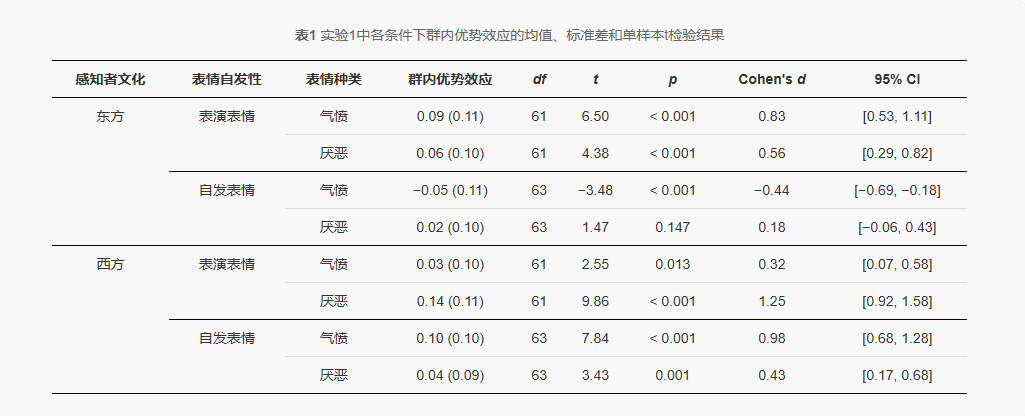
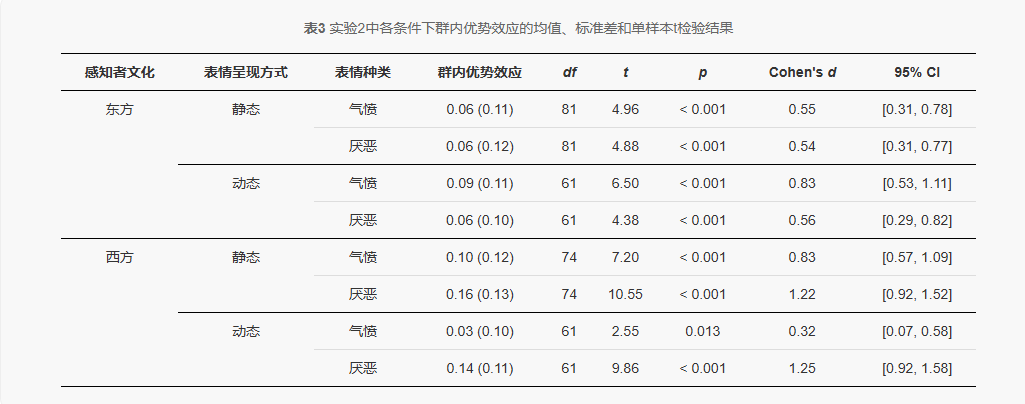
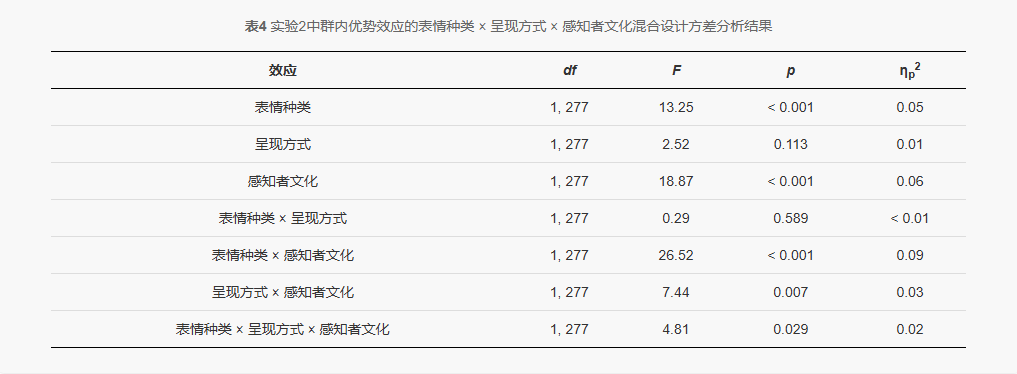
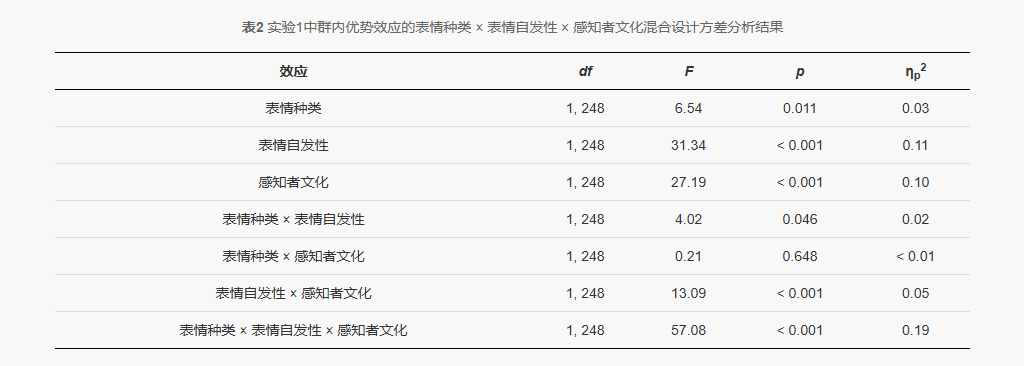
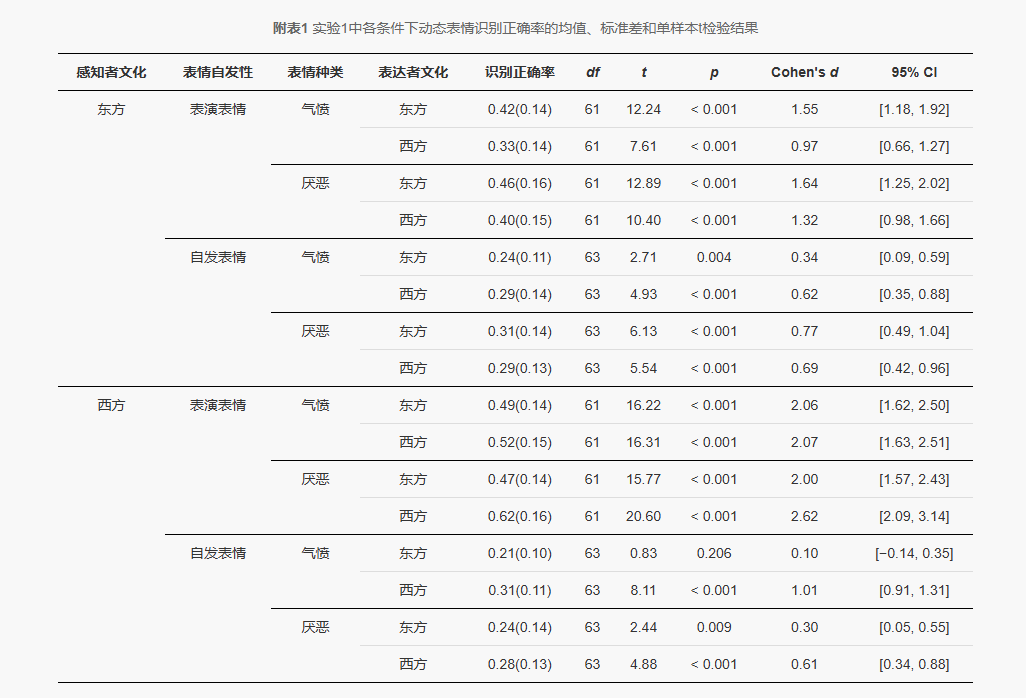
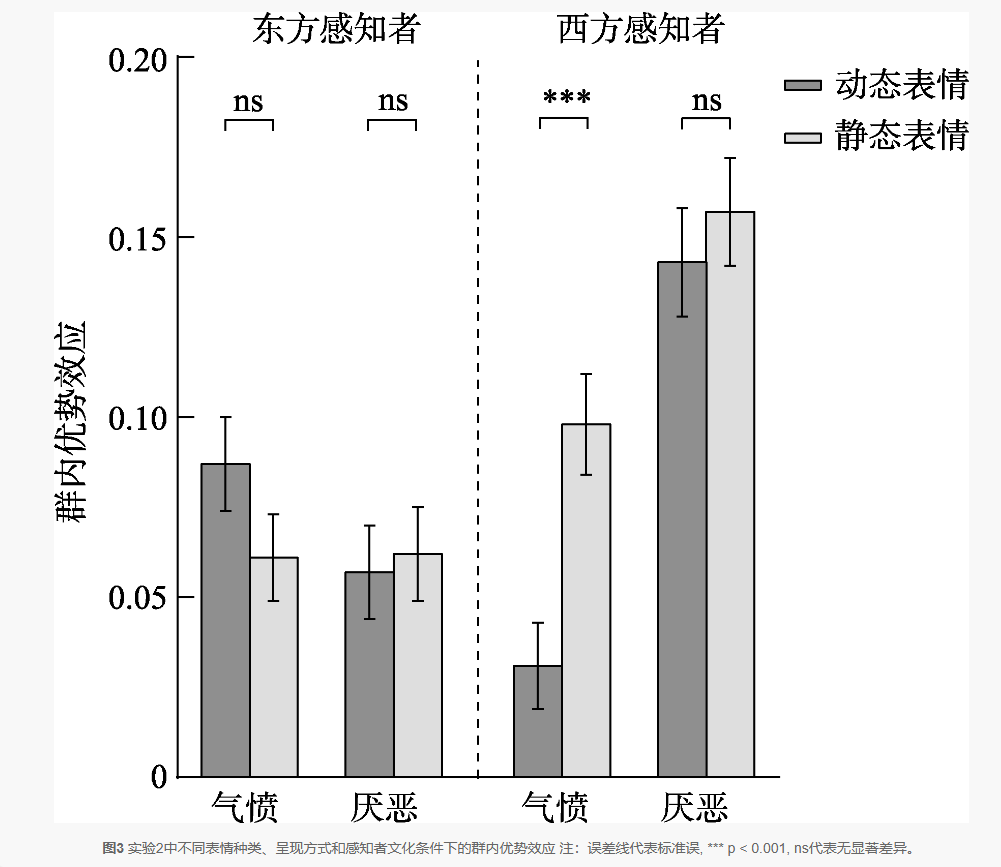
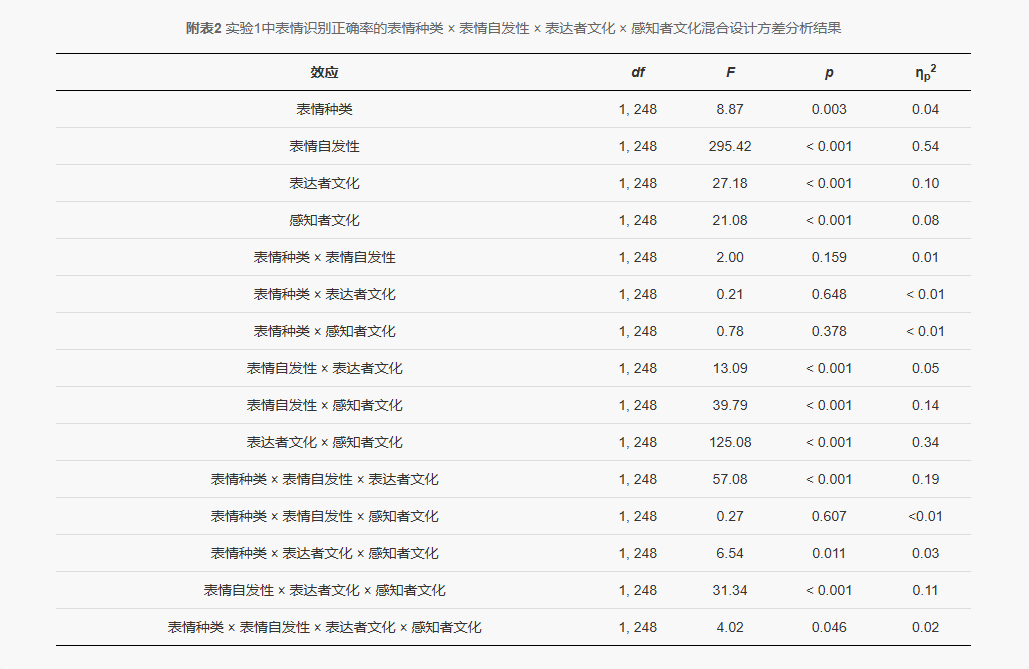
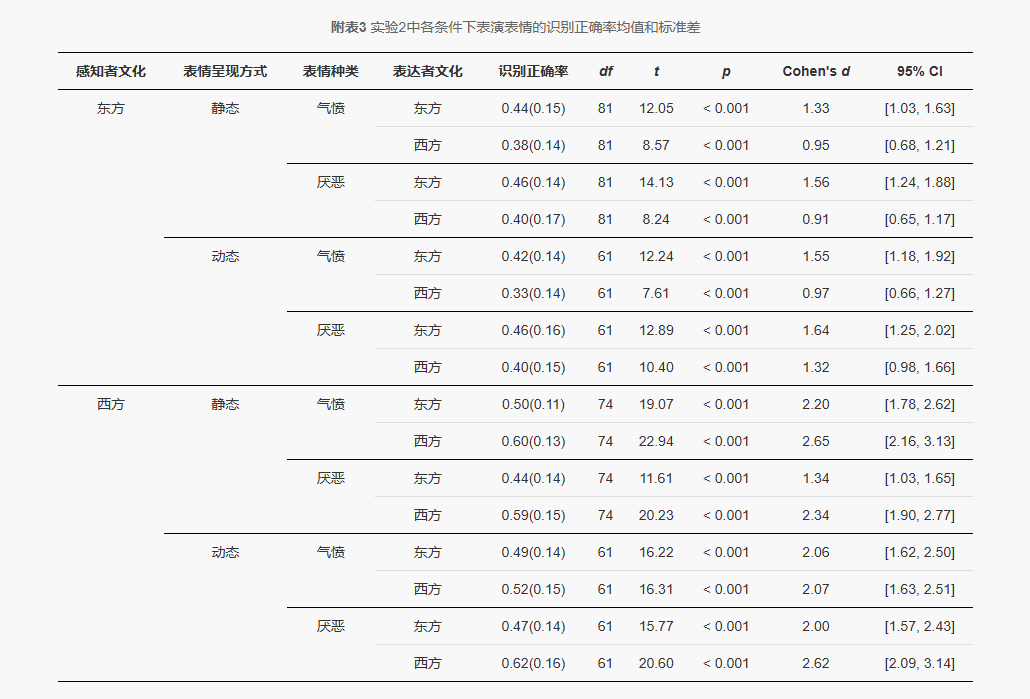
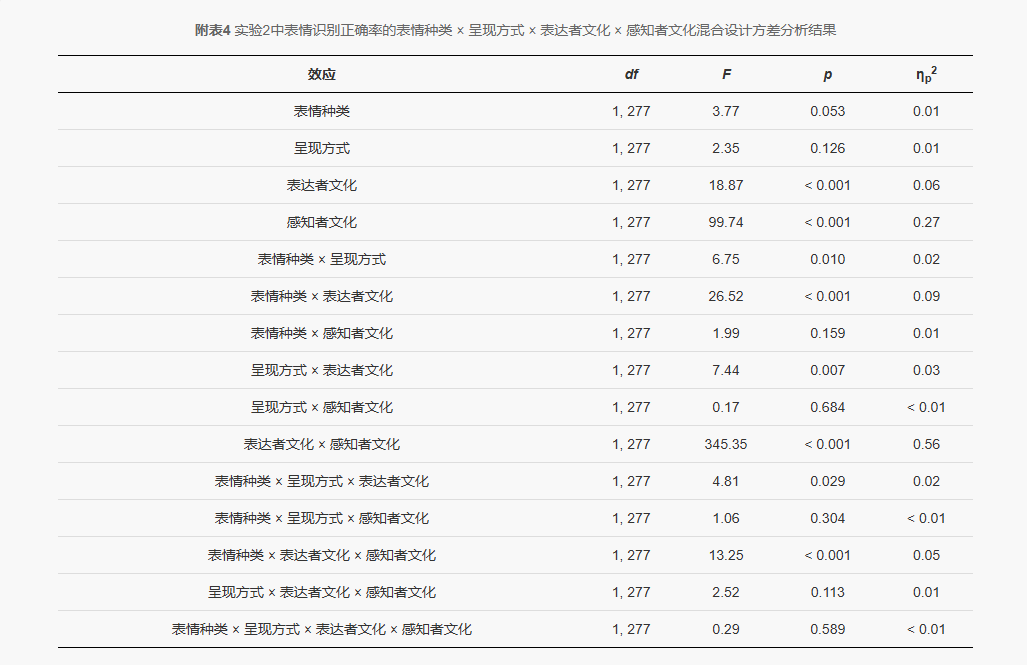
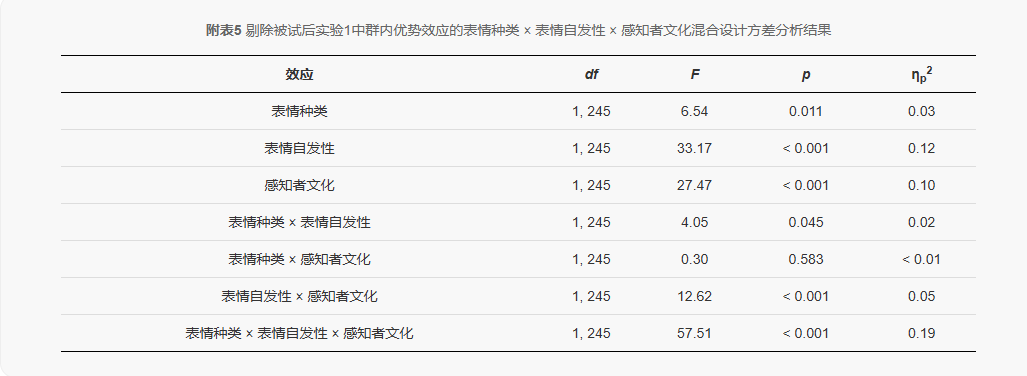
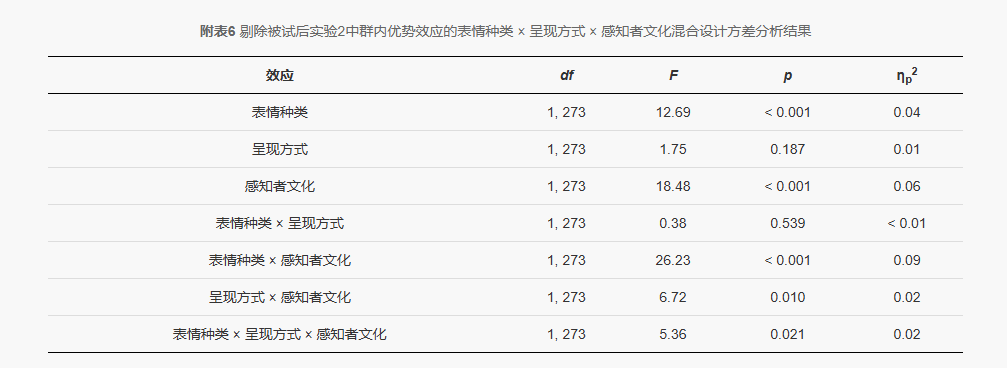

-方霞, 葛猷勋












参与评论
评论列表